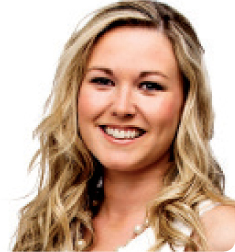
Should aesthetics be a field of practice for anyone other than doctors, dentists and nurses? It is fair to say that most medical professionals in aesthetics (doctors, dentists and nurses) are relatively unified on the matter of lay persons being prohibited from performing injectable treatments, but where there does appear to be some division is on other professions, like the wide array of healthcare professionals (HCPs) whose presence in this sector is growing.
Whereas some individuals are adamant that this is not a field of medicine that should be opened up to anyone beyond doctor, nurse or dentist, others have a more left-field view, acknowledging that it is not always a black and white issue. As with any topic, once we delve deeper than the surface of this debate it becomes very clear that this issue is about something more complex than a mere title.
Almost a year ago, the Private Independent Aesthetic Practices Association (PIAPA) was approached by a physiotherapist registered with the Health & Care Professionals Council (HCPC) to enquire about membership with the association. Our automatic response was that we accept only nurses, doctors and dentists; however, once pressed for an explanation, we found it increasingly difficult to explain why this was, other than a historical unwritten consensus that only these professionals were sufficiently experienced enough to perform non-surgical aesthetic treatments.
The case put forward by this physiotherapist was a difficult one to refute. Not only was she pushing the HCPC to apply to them the same regulation as other medical councils and recognise aesthetics as an independent sector, but her level of skill and experience was far beyond anything we expected. We discovered she had an MSc and specialised in respiratory and ventilatory care, held several autonomous consultant practitioner roles, was an independent prescriber, honorary lecturer and held a certificate in intensive care. We gradually came to realise that she was just one example of many such individuals.
This sparked an ongoing journey of discovery and conflict for the association. Turning our attention to a group of professionals that we had previously been somewhat ignorant to opened the door to further questions. Should all HCPs be allowed to practice in aesthetics? Will their regulating body respect aesthetics and regulate it? Do the other medical councils respect aesthetics and regulate it properly? Are all dentists, doctors and nurses automatically suitable to practice in the field?
These questions have polarised medical professionals already within aesthetics, as well as suppliers, groups and associations. It is clear that many product companies will not train or support HCPs, and some pharmacies will not supply them, whereas groups such as the Aesthetic Complications Expert (ACE) group have created a ranked membership for HCPs, and the Joint Council for Cosmetic Practitioners (JCCP) has allowed them to enrol since its inception.
Dr Patrick Treacy, in a recent article for Aesthetic Medicine addressed his concerns over ‘non-medical personnel’ performing medical aesthetic procedures. He writes: ‘There is no other country that is known where pharmacists, podiatrists, paramedics and dental hygienists can inject patients. Many of these professions have a high level of training that affords them the knowledge and experience to perform their vocation incredibly well but aesthetic medicine does not form part of their remit’ (Treacy, 2018).
He goes on to say that ‘they lack clinical training in assessment, history taking, examination, anatomy and procedures’ (Treacy, 2018). Treacy makes reasonable points throughout the article, especially when examining the chain of command when a prescription passes only through the hands of one pharmacist from script to administering, with little to no scrutiny. But when we reflect just on the one HCP discussed earlier, can we fully agree with all of his notions? Furthermore, it raises the question of whether if we accept one very advanced HCP, should all be accepted in aesthetic medicine? Podiatrists and radiographers too?
Treacy also comments that medical responsibilities were originally devolved to fringe medical professionals in a time of crisis during the Second World War, and that we have not successfully retracted this power to administer drugs since.

Arguing on an opposite note to this is Dr Tim Pearce, who makes some very honourable points, but has faced fierce opposition for his views. In a recent video posted on Facebook, he discussed the role of HCPs in aesthetics and alluded that, while we are trying to maintain a traditional hierarchy in aesthetics, we are being left behind by a more progressive NHS. He says, ‘The NHS is changing the hierarchy as we speak, so they are training physiotherapists to prescribe and pharmacists to prescribe and there are nurse practitioners who are operating just like GPs and pharmacists who operate almost indistinguishable from GPs and paramedics who work in A&E departments’ (Pearce, 2019).
Pearce believes that for every profession to enter the field of aesthetics lower than a plastic or maxillofacial surgeon, we have drawn a hypothetical line and said that no others are to enter. He suggests that we are not open to certain HCPs in aesthetics because we have a subconscious bias to protect an existing hierarchy that allows practitioners their place and status, and that those that do not subscribe to this line of thought are wary of speaking out and dissenting.
Pearce's main point is that we must embrace those that display reasonable proficiency and skill, while still avoiding the blatant risks of handing the needle to a complete lay-person. The bottom line that Pearce maintains is that any practitioners must belong to a regulating body. Pearce remarks, ‘If the purpose of our system is only to provide care to patients, rather than to protect the status of those in the hierarchy, it is justifiable to upskill people lower in the hierarchy to do jobs previously done by those higher up, so long as the benefit of easier access offsets any risk.’
The committee of PIAPA are arriving at an understanding that we should not shut the door to health care professionals who have acquired and worked for an exceptional skill set. However, like Dr Pearce, we find it difficult to acknowledge some of the many titles, such as podiatrist, as being qualified to work with the facial anatomy. Regardless of our varying opinions, this appears to be a matter that will not be solved quickly or easily.


